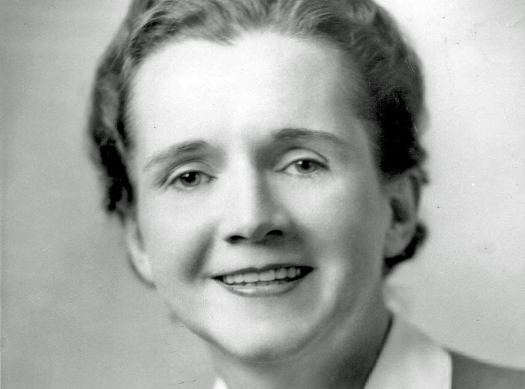Green Legacy

Half a century after the death of Silent Spring author Rachel Carson, two authors in the latest issue of The Biologist call for renewed action on species extinction. Karl Mathiesen begins with Carson's legacy.
The Biologist 61(6) p13
It's 50 years since Rachel Carson, the patron saint of the global environment movement, died from lung cancer. Two years earlier, in 1962, her book Silent Spring had catalysed an explosion in environmental consciousness.
Patricia Hynes, one of Carson's many adulators, said in 1989: "Silent Spring altered a balance of power in the world. No one since would be able to sell pollution as the necessary underside of progress so easily or uncritically."
Yet half a century later, our ecological footprint has never been greater. A recent study by the World Wildlife Fund found populations of vertebrates had halved in the past four decades. In October, the United Nations made it clear that it did not expect the world to come close to meeting a set of 2020 biodiversity targets agreed by almost 200 countries in 2010. In short, we are failing.
Carson's research showed that the pesticide DDT, which was dumped in vast quantities on crops across the world in the 1950s, was harming humans and ecosystems. The contemporary debate on the use of neonicotinoids as insecticides is history repeating itself. There are legitimate concerns over the impact of neonicotinoids, particularly on bees, but evidence is emerging of wider problems. A recent survey of farmland birds in the Netherlands found sharp declines in areas where the chemicals had been used. The European Union has proactively banned them until their safety can be proven. Still, neonicotinoids remain the world's most used insecticide.
An often-cited legacy of Silent Spring is that it led to the creation of the United States' Environmental Protection Agency (EPA). Last year, in a perverse twist, beekeepers sued the EPA for approving neonicotinoids produced by Dow Chemical, which also made DDT. Neonicotinoids are a minor environmental concern when compared with the massive impacts of habitat loss, exploitation and climate change. But this example gives a sense of history repeating, or stalled – a concern environmentalists must confront as they reflect on half a century of small victories and great failures.
Carson's book had the effect of crystallising the environmental debate. It created a green movement that asserted itself through science, but it also gave birth to its negative. During a campaign of misinformation funded by a reported war chest of $250,000, the chemical industry and even some media outlets attacked Carson's research. Time magazine, for instance, called the book "hysterical" and "patently unsound".
Fifty years later, replace DDT with neonicotinoids, climate change or any other threat to biodiversity, and the two sides sit in the same trenches – using science as a weapon. This has eroded the level of public trust in the sciences.
Science should be able to arbitrate and guide policy decisions. However, industry, environmentalists and a compliant media are guilty of manipulating or misinterpreting science to achieve their ends. The only way to break this nexus is for science to be generalised and popularised, and the public trained to be sceptical of competing interpretations. This is the legacy Carson, who was first and foremost a scientist, would have most desired.
Karl Mathiesen runs The Guardian’s weekly Eco Audit, in which he fact-checks the big claims about the environment.


